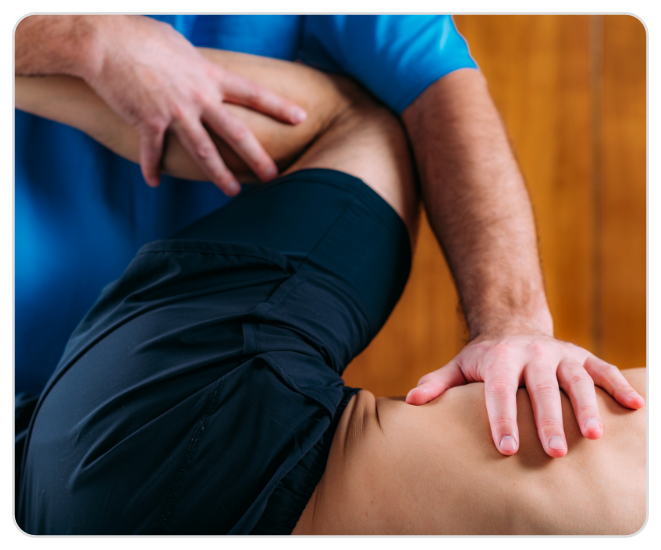Sports Hernia and Pelvic Instability
Sports hernia is a general term used for groin pain or soft tissue injury of the groin that more commonly occurs in sports people and athletes. It is also referred to as Athletic Pubalgia, Sportsman’s groin, Gilmore’s groin, Pelvic Instability or Incipient Hernia. It is due to either an acute injury or more commonly repetitive exertional stress resulting in overload and injury to the tendons, muscles and/or ligaments of the lower abdomen, groin and/or pelvis. These injuries are more common in sports that require repetitive fast twisting or turning, rapid acceleration/deceleration movements or side-to-side sports where one leg may balance whilst the other swings or moves against a force (such as striking a ball).

Symptoms of Sports Hernia
Groin pain is the main symptoms of a Sports hernia. This may be after a specific incident or event, but more commonly the pain has a more gradual onset that is exacerbated with ongoing sport or activity. The pain may settle after a few days or with rest from the sport/activity but return with re-engagement with sport. Unlike an inguinal hernia there is no bulge.
Diagnosis
Persistent or recurrent groin pain, particularly with sport/repetitive physical activity may prompt you to see your GP, Sports Physician or physiotherapist. The history of your symptoms and physical examination of your abdomen, groin and upper thigh is important to identify the possible cause(s) or area of injury. Investigations may include ultrasound, X-ray, CT scan or MRI scan and each different scanning option has certain advantages and disadvantages depending on your likely injury. Note that MRIs commonly have to be recommended by a Specialist.
At The Australian Hernia Centre, we have a long history of surgical management of groin issues and pelvic instability within Australia’s elite sporting fraternity.
Treatment
In most cases non-operative treatment including rest and physiotherapy is the appropriate initial treatment. This can be managed by your Sports Physician and/or Physiotherapist. If this does not work, if the pain returns after non-operative treatment or if your Sports Physician or Physiotherapist has concerns, a referral to a Surgeon is appropriate. Ensure the Surgeon to whom you are referred has experience with groin pain, Sports Hernias and Pelvic Instability and can discuss the role of non-operative and operative treatments and what are the risks and expectations you should have from an operation.
